5 Tips to Know Before Trying Bodyboarding
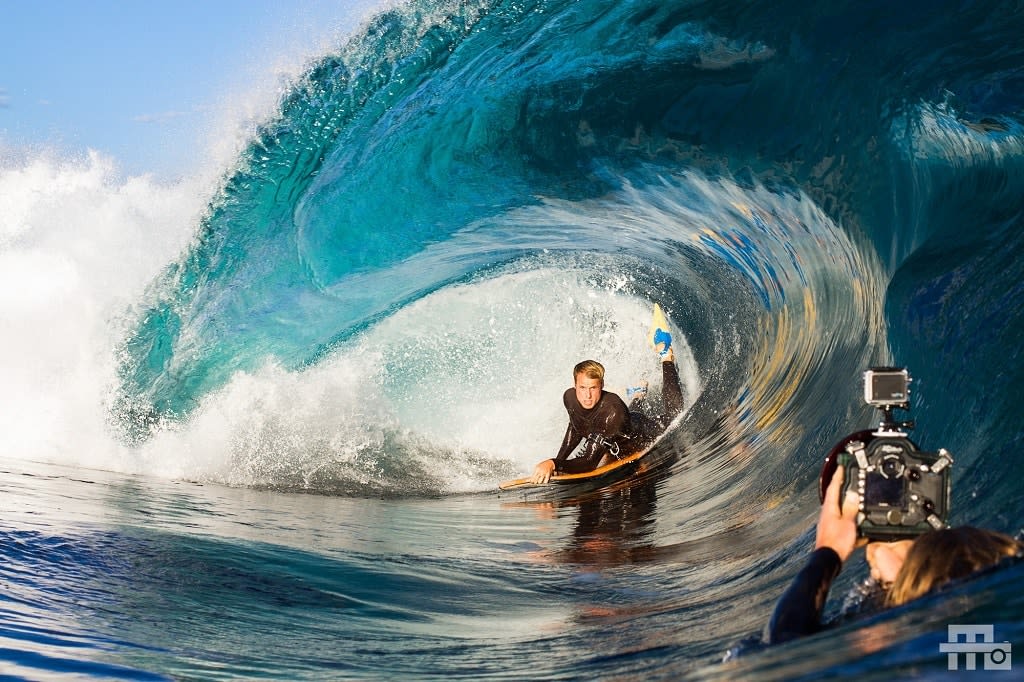
Bodyboarding is a fun and beginner-friendly sport that offers hours of sea-based thrills. Whether you’re a seasoned sea veteran, a lover of the ocean, or a complete beginner, riding a few waves on a bodyboard is a guaranteed recipe for happiness. So, if you’re feeling ready to go face the waves, check out our top tips for bodyboarding, to ensure you feel safe and look like a pro out there.
Work on your swimming technique
To have the best success at bodyboarding, you’ll want to be a good swimmer. We aren’t talking about needing to be the grandson of Mark Spitz, Michael Phelps’s cousin or Laure Manaudou, but if you find breaststroke difficult then it’ll most likely end up holding you back when you try to get into waves. If your board ever ends up escaping you, then you’ll want to know before going out that you’ll feel at ease either swimming to retrieve it or finding your way back to shore.
So, sign up at your local pool and start practicing, or book in a few lessons to fine-tune your swimming technique. This way you can enter the water with your bodyboard in complete confidence and style!
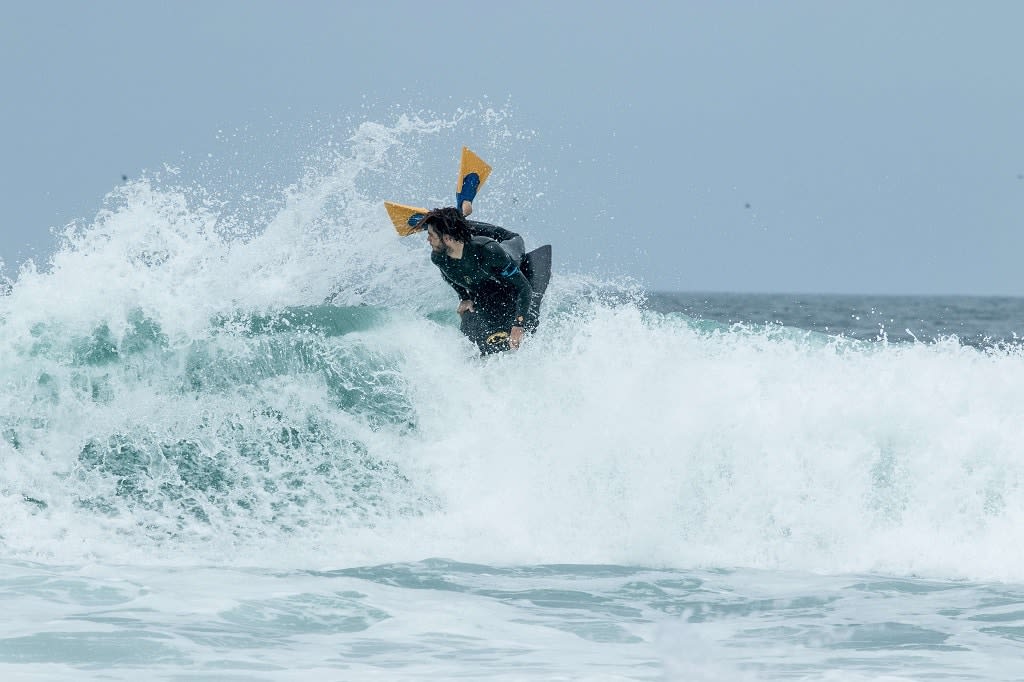
Understand the forecast
When you start bodyboarding, the equation is the same as surfing, kitesurfing or windsurfing. Timing + knowledge = security. Learning about weather forecasts and weather conditions is essential for any session, just as weather is checked to see if it’s going to rain this weekend, if your local break announces a swell worthy of Nazaré, then you’ll know that you have to wait a day more! Riding in manageable conditions will bring you even more happiness. Starting your bodyboarding practice with a friend or instructor is also advisable.
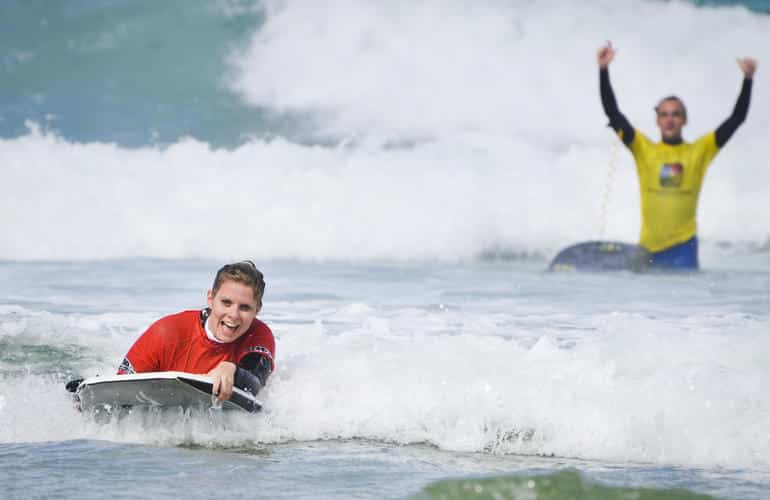
Have the right equipment
In terms of bodyboarding, as is the case with running shoes, nothing beats personalization! A great, useful tip to choosing the right size for you is that when the bodyboard is placed on the ground it should reach to about the height of your belly button.
The board isn’t the only thing that matters. Depending on the water temperatures, it is advisable to wear a good quality neoprene wetsuit or a Lycra rash vest to avoid any irritations, while at the same time adding a bit of buoyancy and sun protection.
To finish off on the equipment front, you’ll need a leash, which attaches to your bicep, to stop the bodyboard being washed away. You’ll also need a pair of fins and fin socks to avoid any discomfort.
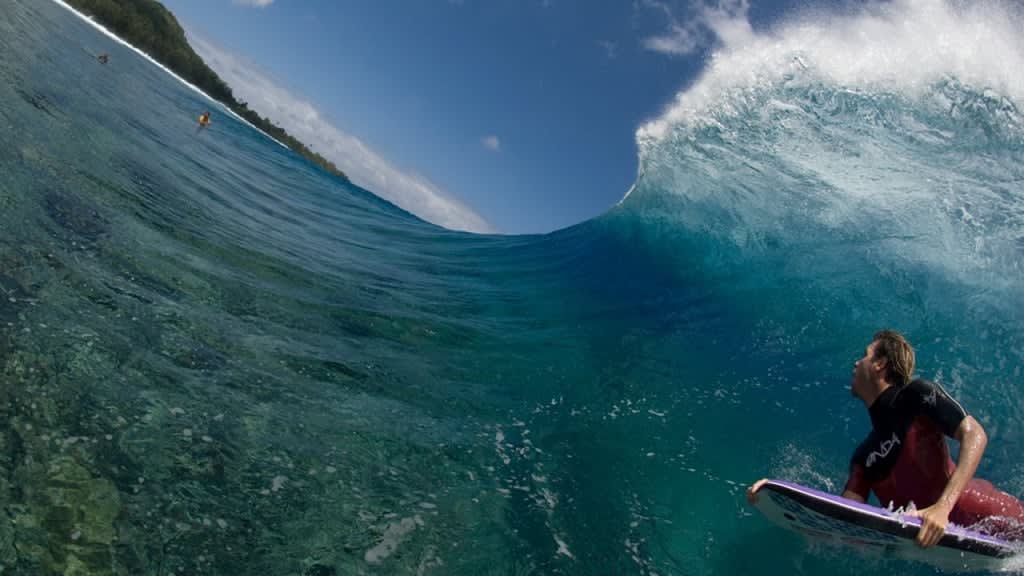
Warm-up before you go
Make sure you’re prepared and warmed up before jumping into the waves. Once you get in the sea, you should always expect the unexpected, in an ever-changing playground you’ll want to make sure that your body is ready for anything. To do this, simply practice how to get into the right position: lie on the bodyboard with your hands on the front of the board and position the back of the board under your lower stomach. From here, you can then practice paddling, and try to kick your legs underwater for better acceleration into the oncoming waves.
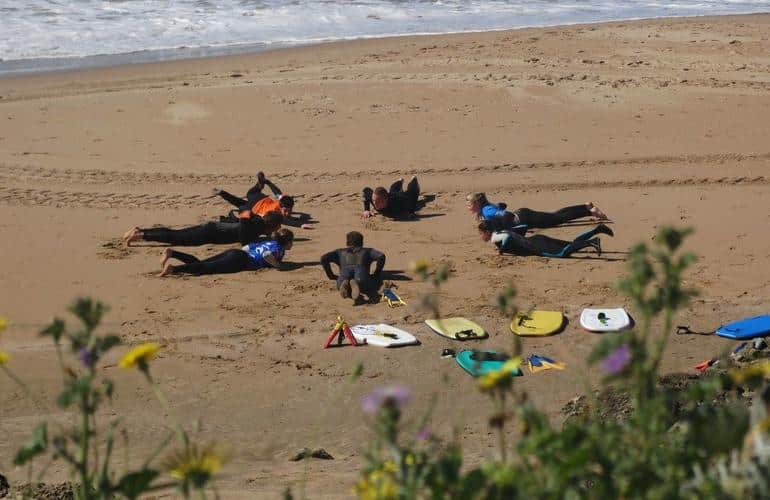
Find the right wave
As a beginner, choose safety over trying to out-perform those around you. Some great beginner bodyboarding advice is to try and resist being tempted by waves that are too big or too fast and get accustomed to “rideable” waves first that run straight to the beach. When you’re ready to go back in towards shore, simply beat your feet in that direction while paddling hard and try to position yourself so you can cruise in on the front of a wave and let the power of it carry you in with minimum effort and maximum joy!
Have a read of our 12 Things to Know Before Your First Surfing Lesson article.
Interested in getting out on the waves, but not on a bodyboard? Check out all our surfing activities.
Top photo credit: Matt Blakers